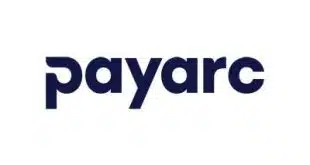If you control the payment, you control the loan, the deposit, and the entire customer relationship.
I’ve echoed these same words you see in the headline to bank partners for over a decade, but never has this sentiment been more poignant than in today’s dynamic banking market.
You see, for too long, payments have been relegated by most banks to a secondary offering, often living in the bowels of the bank’s basement or tucked away in treasury as an outsourced offering. Frankly, the early evolution of the payments landscape caused such posturing. Electronic payments and deposits were minuscule compared to checks and cash. And as the interchange schedule ballooned and terminals became small computers, most banks lacked the expertise—and, perhaps worse, interest—in maintaining a direct presence in this industry.
Out on the road, presenting to partners and prospects, I often ask colleagues how they define their role as a banker. It’s a bit of an open-ended question that has yielded some interesting answers over the years. I’ll spare you the funny responses and cut straight to the chase.
Your customers believe that your role as a banker is to provide them the products, services, and expertise they need in order to better serve their business. You see, it’s not about you, it’s about them. Having that servant sales mentality allows you to provide the capital a bank executive needs, say as a loan officer, to grow the bank’s business. You could also be guiding the bank through the right point-of-sale, in merchant processing, to allow it to collect receivables while also managing employees, inventory, and marketing.
Take the Gloves Off
I’d like to stop and ask an old-fashioned question. Why do people rob banks? The answer is pretty simple. It’s where the money is. So why should your bank be involved in payments? Same answer.
Makes sense, right? So why are so many banks still not offering payments as a core product?
I don’t have all the answers, but I can tell you that your competitors are following the money. Take Square, for example. This is the 16-year-old startup that aimed to revolutionize the payments business through a facilitator model that sidestepped the traditional, cumbersome on-boarding process and allowed Sally’s Sewing Shop to accept payments in minutes.
Instead of having to purchase desktop terminals, Square was revolutionary in turning ordinary smart phones and tablets into double-duty points of sale. And to keep it simple, stupid, its flat-rate pricing model, albeit expensive, attracted a slew of business customers who were tired of reconciling the insanity of issuing interchange on monthly statements.
But Square is only in this business for itself. Unlike the case with traditional acquirers, banks cannot partner with Square to resell its services. That’s where the gloves need to come off.
Keep in mind that Square did not simply stop with just facilitating payments. Halfway through its lifespan it opted to offer small-business loans to clients. Think about it this way: That little white square terminal was the financial window into the client relationship.
Knowing the business’s cash flow and having historical sales activity on hand, Square had the necessary tools to advance customers the cash they needed to grow their business, again side-stepping many of the lengthy and tiresome processes of traditional lending.
Control the Payment
With its expertise in payments and banking, Square’s entry into the lending business—and that of other acquirers—was always a direct threat to banking’s biggest cash cow: lending. Trust me, making our bank partners, especially their lending teams, aware of this practice helped our client banks drive some of their largest organic growth in fee income. That’s because cross-selling the banks’ payments products closed the financial window down for competitors.
But that’s not all. As if lending against you wasn’t already enough of a concern, Square was successful in setting up a Utah-based, FDIC-insured bank in March 2020. During its first six months of operation, over $1 billion dollars that should have been sent to banks remained easily and simply within Square Bank—with customers earning a high interest rate to leave it there.
That model is now being followed by fintechs like Intuit and many others. And, given the high interest rates we all face in today’s market, these fintechs are paying high returns to incentivize customers to ditch their traditional bank entirely.
I can’t help but finish this piece the same way I started it. Simply put, if you control the payment, you control the loan, the deposit, and the entire customer relationship. Be mindful that your competition has changed. Fintechs and acquirers are now banks, leading their deposit, lending, and fee-income push through the payment vehicle.
For bankers, it’s time to follow suit—but better yet, beat them at their own game. As we saw with the success of community banking and the Payroll Protection Program, automation and technology still get crushed by human relationships.
That’s where you come in. Building a localized, strong payments product with the right mix of technology, transparency, and high-touch service will position your bank to dominate the payments landscape, thereby leading you to more fee-income, deposit, and loan opportunities.
—Matt Moore is president at BankMax–Celero Commerce




